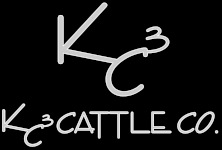We get a lot of questions about the cattle we raise – and some of the terminology for buying direct from a farmer instead of a supermarket. This page should help to answer those questions.
Let’s first start by explaining the process.
Your Beef Breakdown, Explained
If you have ever purchased a quarter, a side or a whole beef carcass, chances are you have wondered why you have received less meat than expected. The average weight of a live steer or heifer ready for harvest is 1,300 pounds!
Live Weight to Hanging Carcass
In order to change a 1,300-pound beef animal into edible meat product, butchers first have to convert it into a hanging carcass by removing the hide, head and internal organs. On average, only 62 percent of the animal’s original weight remains, resulting in an average hanging carcass weight of 806 pounds. The meat industry calls this percentage the “dressing percentage,” which varies between animals due to many factors including hide thickness, presence of horns, whether the animal was grass- or grain-fed, etc. The items removed in the conversion of an animal to a carcass are often not desired. The beef carcass, which now only contains fat, bone, connective tissue and meat, is then chilled and hung for approximately 14 to 21 days. Chilling of the carcass converts muscle to meat. Once the meat is chilled properly, the carcass is then “aged” for the rest of the 14- to 21-day period. During this aging process the meat develops flavor, and most importantly, becomes more tender. Unfortunately, a small amount of weight is lost during the aging process due to water evaporation.
Hanging Carcass to Cuts
After the carcass is properly aged, it is ready to be broken down into retail cuts. On average, 40-42 percent of each carcass is inedible bone, fat and connective tissue. Once the carcass is fabricated and inedible objects are removed, a whole carcass will yield approximately 468 pounds of edible beef product. Some of these muscles will become mouthwatering steaks such as Filet Mignon, while others may have little value as a steak or a roast and are directly converted into ground beef products. Ground beef is also made up of bits and pieces that are trimmed from steaks and roasts during the preparation process. Approximately 38 percent of the 468 pounds of edible beef products will be converted into ground beef. The remainder is cut into your favorite steaks and roasts as specified.
Frequently Asked Questions
What does your cattle eat?
All the beef is of high quality, raised and fed locally with no hormones or antibiotics.
What is Hanging Weight?
Hanging weight is the weight of the beef animal after it has been field dressed but before it has been aged, cut, packaged and frozen. In other words, it is the weight of the meat and bones after the head, skin, feet, and organs have been removed; usually about 60% of the live weight.
What is Packaged Weight?
This is the actual weight of the meat that the customer ends up taking home; usually about 65% of the hanging weight.
What is a Locker?
This is another term for the processor, or butcher, that processes the cow into the cuts you request.
What are the locker fees?
Locker fees range at a $1.00 per pound of whole bulk beef hanging weight.
Can I use my own locker?
Yes. We generally use Raber Packing Co. but if you have your own locker and they have an open date available to process the cow.
What is a cut list?
This is the desired way the customer wants the butcher shop to separate and package the cow. You can see a list of commonly requested cuts on our Cut List page.
